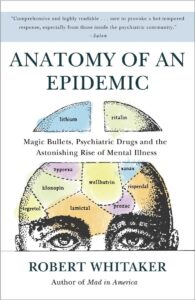In recent years, a silent pandemic has been sweeping across the globe, affecting millions of lives and challenging our understanding of human well-being. This pandemic isn’t marked by physical symptoms or contagious pathogens, but by an alarming increase in mental health disorders. From anxiety and depression to more severe conditions like bipolar disorder and schizophrenia, the world is grappling with a crisis that touches every corner of society.

The statistics are sobering. According to the World Health Organization, one in four people will be affected by mental or neurological disorders at some point in their lives. In 2019, an estimated 970 million people worldwide were living with a mental disorder, with anxiety and depressive disorders being the most common. These numbers have only continued to rise, painting a picture of a global community increasingly burdened by psychological distress.
But what’s driving this surge in mental health issues? The answer is complex and multifaceted, reflecting the intricate interplay between biological, psychological, and social factors that shape our mental well-being.
One significant contributor is the rapid pace of modern life. In an era of constant connectivity and information overload, many people find themselves struggling to cope with the relentless demands of work, relationships, and societal expectations. The pressure to succeed, coupled with the fear of missing out, can create a perfect storm of stress and anxiety that takes a toll on mental health.

Urbanization and changing social structures have also played a role. As more people move to cities and traditional support systems erode, many individuals find themselves isolated and disconnected from their communities. This lack of social connection can exacerbate feelings of loneliness and depression, contributing to the overall increase in mental health disorders.
Environmental factors cannot be overlooked either. Climate change and environmental degradation have been linked to increased rates of anxiety and depression, particularly among young people who fear for their future on a warming planet. The term “eco-anxiety” has emerged to describe the distress caused by environmental changes and the perceived lack of action to address them.
Economic instability and inequality have further fueled the mental health crisis. Financial stress, job insecurity, and the widening gap between rich and poor can all contribute to feelings of hopelessness and despair, increasing the risk of mental health disorders.

The rise of social media and digital technology has introduced new challenges to mental well-being. While these platforms offer unprecedented connectivity, they also expose users to cyberbullying, unrealistic social comparisons, and addictive behaviors that can negatively impact self-esteem and mental health.
Perhaps most concerning is the impact on younger generations. Children and adolescents are experiencing mental health issues at alarming rates, with suicide now ranking as the second leading cause of death among 15-29-year-olds globally. The pressures of academic performance, social media, and an uncertain future are taking a heavy toll on young minds.
Despite the growing prevalence of mental health disorders, access to treatment remains a significant challenge. In many parts of the world, mental health services are underfunded and understaffed, leaving countless individuals without the support they desperately need. Stigma and discrimination further compound the problem, discouraging many from seeking help and perpetuating a cycle of suffering in silence.

However, amidst these challenges, there are reasons for hope. The increasing awareness of mental health issues has sparked important conversations and initiatives aimed at addressing this global crisis. Governments, healthcare systems, and organizations around the world are beginning to prioritize mental health, implementing policies and programs to improve access to care and reduce stigma.
Innovative approaches to mental health treatment are emerging, including digital therapeutics, teletherapy, and mindfulness-based interventions. These tools have the potential to reach underserved populations and provide support to those who might otherwise go without treatment.
Workplaces are also starting to recognize the importance of mental health, with many companies implementing employee assistance programs and wellness initiatives. Schools are incorporating mental health education into their curricula, equipping young people with the knowledge and skills to manage their emotional well-being.

As individuals, we all have a role to play in addressing this pandemic of mental disorders. By fostering open conversations about mental health, supporting those who are struggling, and prioritizing our own emotional well-being, we can contribute to a culture that values and protects mental health.
The road ahead is long, and the challenges are significant. But just as we’ve faced other global health crises, we have the capacity to confront this pandemic of mental disorders. It will require a collective effort – from policymakers and healthcare professionals to educators and community leaders – to create a world where mental health is given the attention and resources it deserves.
As we move forward, let us remember that behind every statistic is a human story – a person deserving of compassion, understanding, and support. By working together to address this silent pandemic, we can build a healthier, more resilient global community for generations to come.
Hey there! We hope you love our fitness programs and the products we recommend. Just so you know, Symku Blog is reader-supported. When you buy through links on our site, we may earn an affiliate commission at no extra cost to you. It helps us keep the lights on. Thanks.
Disclaimer: The information provided in this discussion is for general informational and educational purposes only. It is not intended as medical or professional advice. Only a qualified health professional can determine what practices are suitable for your individual needs and abilities.

